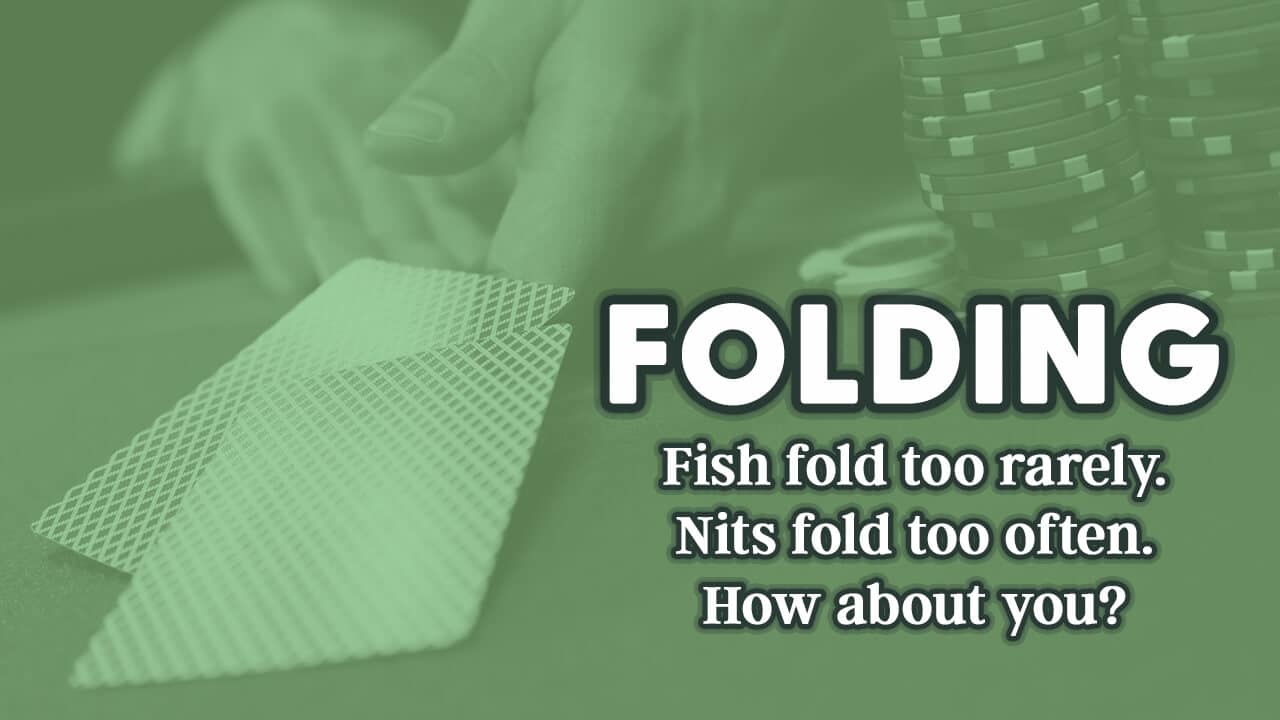Sets are usually pretty easy to play. Bet them, raise them, and build the pot quickly. But what about the times when the draws complete? What about spots where the board gets ugly?
These “bad” spots can create a “tight is right” mentality – and we want to disprove that mindset ASAP. Let’s explore a single hand, one with bottom set, and see how you SHOULD be playing sets against drawing hands:
This hand was sent in by Oliver and was played online at 100NL 6-max, in which we pick up 6♦6♣ in the big blind. Villain1 in the cut-off opens to $2.50, Villain2 in the small blind calls, and Oliver calls. Oliver tells us Villain1 is someone he sees regularly at the tables, although he’s not someone that comes across as particularly good, so we’ll view Villain1 as a bad reg. Villain2 is unknown to Oliver.
The flop comes 9♦J♣6♥ giving us bottom set. Villain2 checks and Oliver decides to check along. You can make an argument for betting the set here, but I generally prefer checking, particularly against a bad reg who is likely to c-bet at too high a frequency.
Villain1 obliges with a c-bet, Villain2 calls, and Oliver decides to check-raise to $18 with about $18 in the middle. I’d really like to see a larger sizing here. A pot-sized check-raise here would be to about $30, so I’d tend to make it a bit less than that here – say $25 to go.
You might ask if the bigger raise size really makes much difference. I’m convinced it has a significant effect on our bottom line. We nearly always have the best hand here. If our opponents are going to continue with AJ and QQ for $18, won’t they also continue for $25? In other words, by raising larger here we get more money into a pot we figure to usually win without negatively impacting our opponent’s ranges.
As played, both villains call us and we go to an 8♠ turn. Villain2 leads out for $33 into the $61.50 pot and Oliver folds. He says the following about his reasoning:
The thing I’m obviously most interested in is your opinion of the turn. When V2 lead out I just thought I have absolutely 0 bluffs there ever, and I don’t think many other players do. Hence the fold.
A couple of important points about this spot. First, you’re getting roughly 3-to-1 direct odds and decent equity even when you’re behind. You also likely have good implied odds. Even if you need to improve to win, on those occasions when you do you may make more money from both villains. So the math of the situation strongly points towards a call.
The second point comes from Oliver’s write-up. Oliver assumes that because he has no bluffs in Villain2’s situation that Villain2 doesn’t either. That assumption is often dangerous, particularly as in this case where we’re dealing with an unknown player. Sure Villain2’s action is consistent with a nutted hand, but that doesn’t mean we can jump to the conclusion that they have zero bluffs – even if they are multitabling. Equally importantly, an unknown player could be overvaluing a hand that we have crushed.
It’s a common error for players to take their personal range construction or betting frequencies and assume an opponent plays the same way. Assuming everyone plays the same way you do is a very dangerous proposition, partly for the simple reason that it’s plain wrong.
As the hand played out, Villain1 called the turn bet, the river went bet-call, Villain2 showed the turned straight and Villain1 tabled AA. So, in this case, we were beat on the turn and would not have improved, but that does not alter the fact that from a purely mathematical poker perspective we should have called the turn bet.
Of course, there are many cases where folding is the correct play, so to help you figure out when you should fold and when you should not, I’m recommending you read my guide to this topic called “Folding In Poker.” It addresses where players go wrong when it comes to folding, as in the turn spot in this hand. If you’ve made any questionable folds in the last month I suggest you read the guide, use it to analyze the spot in which you folded, and hopefully learn how to handle these situations more accurately and profitably.

